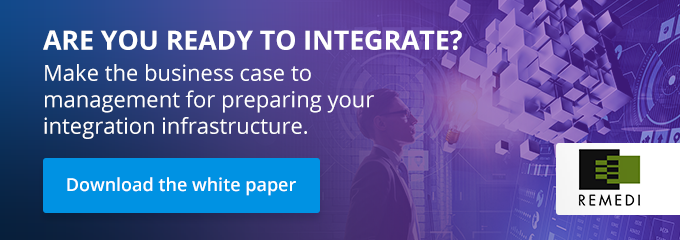
Even if you purchased your EDI system years ago, you do not necessarily need to replace it. However, there are definitely steps you can take to enhance its capabilities. One of those steps is implementing APIs as B2B integration tools.
APIs work in tandem with EDI systems to supercharge their functionality. Learn more about how APIs help you get the most out of your EDI investment.
What Are APIs?
APIs stand for “application programming interfaces.” They form a connectivity layer that allows data transmission in real time.
Think of APIs as electrical sockets. Electrical sockets allow a device to consume a certain amount of electricity in a standardized way. Similarly, APIs let you consume a service, and they deliver that service in a way that the device or application can handle it. An example of how APIs work is that they connect applications to data sources.
A Brief History of APIs
While you might be hearing quite a bit about APIs now, they’re not a new development. They’re a progression of service-oriented architecture (SOA) and the enterprise service bus (ESB). APIs have been used in web development and early object-oriented programming for some time.
SOA refers to a collection of services that communicate with one another; these services must be connected to one another to pass information back and forth or to coordinate activities. Additionally, SOA has led to the development of ESB, a middleware tool that distributes work among an application’s connected components.
Neither SOAs nor ESBs can handle external interactions. That’s where APIs come in; they specify how software components should interact with one another, including how external data sources connect to applications. However, APIs have shortcomings of their own; they don’t integrate, so you still need the integration backbone of an ESB.
APIs and EDI Systems: What’s the Relationship?
APIs are not here to replace EDI systems. Rather, they’re valuable B2B integration tools.
How so? APIs and EDI systems each have their strengths. EDI systems do well at processing large amounts of information in batches; APIs can query smaller parcels of data in real-time. For instance, your EDI system tells you that you’ve electronically transmitted documents to trading partners; APIs, on the other hand, could tell you the status of an order.
| EDI Systems | APIs |
| Bulk electronic file exchange | Machine-to-machine or app-to-app messages |
| Batch and event-driven | Event and real-time driven |
| Large volume transactions | Smaller transactions or messages |
Blending APIs and EDI Systems
As mentioned earlier, there are things EDI systems cannot do (like query real-time information), and there are things APIs cannot do (like process in batches). Because they each have their own strengths, they complement one another.
When you combine EDI systems and APIs, you can get more out of your EDI systems. That gives you a competitive advantage because when you can give your customers reliable, timely information about shipments, they’ll want to do business with you.
“When you combine EDI systems and APIs, you get more out of your EDI system.”
APIs let you modernize your EDI system to better meet your customers’ needs. They work with your existing EDI system to supercharge your B2B integration tools. Want to know more? See some of our recent data integration success stories.




